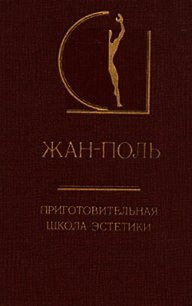Красота и мозг. Биологические аспекты эстетики - Коллектив авторов (лучшие книги онлайн .TXT) 📗
29. Perrett D. J., Smith P. A. J., Potter D. B., Mistlin A. J., Head A. S., Miller A. G., Jeeves M.A. (1984).
Neurones responsive to faces in the temporal cortex: Studies of
functional organization, sensitivity to identity and relation to perception. Human Neurobiology, 3:197–208.
30. Rolls E. Т. (1984). Neurons in the cortex of the temporal lobe and the amygdala of the monkey with responses selective for faces. Human Neurobiology, 3: 209–222.
31. Desimone R., Albright Т. D., Gross C.. Bruce C. (1984). Stimulus selective properties of inferior temporal neurons in the macaque. J. Neuroscience, 4: 2051–2059.
32. Botzel К… Grusser O.-J. (1988). Electrical brain potentials evoked by pictures offaces and non-faces. A search for "face-specific" EEG-potentials. Experimental Brain
Research (in press).
33. Ahrens R. (1954). Beitrag zur Entwicklung des Physiognomic-und Mimikerken-nens. Z. Exp. Angrew. Psycho)., 2: 412–454; 599–633.
34. Spitz R.A. (1967). Vom Saugling zum Kleinkind. Naturgeschichte der Mutter-Kind-Bezichung im ersten Lebensjahr. Klett, Stuttgart.
35. Carey S. (1981). The development efface perception. In: Davies G., Ellis H., Shepherd J. (eds.). Perceiving and remembering faces. Academic, New York, p. 9 — 38.
36. Yarbus A.L. (1967). Eye movements and vision. Plenum, New York.
37. Sackheim H.A., Gur R.C. (1978). Lateral asymmetry in intensity of emotional expression. Neuropsychologia, 16: 473–481. 38. Sackheim H. A., Gur R. C., Saucy M. C. (1978). Emotions are expressed more intensely on the left side of the face. Science, 202: 434–436.
39. Campbell R. (1978). Asymmetries in interpreting and expressing a posed facial expression. Cortex, 14: 327–342.
40. Heller W., Levy J. (1981). Perception and expression of emotion in right-handers and left-handers. Neuropsychologia, 19: 263–272.
41. BuchtelH., CampariF.,RisoC. de. Rota R. (1978). Hemispheric difference in the discrimination reaction time to facial expression. Ital. J. Psychol., 5: 159–169.
42. Grusser О.-J. (1984). Face recognition within the reach ofneurobiology and beyond it. Human Neurobiology, 3: 183–190.
43. Davies G., Ellis H., Shepherd J. (eds.) (1981). Perceiving and remembering faces. Academic, London, p. 392.
44. Zynda В. (1984). Uber das Wiedererkennen von Gesichtem. Thesis, Freie Universi-tat, Berlin.
45. Grusser O.-J., Selke Т., Zynda B. (1985). A developmental study efface recognition in children and adolescents. Human Neurobiology, 4: 33–39.
46. Jung R. (1977). Uber Zeichnungen linkshandiger Kunstler von Leonardo bis KJee: Linkshandermerkmale als Zuschreibungskriterien. In: "Semper attentus", Beitrage flir Heinz Gotze zum 8.8.1977. Springer, Berlin, p. 190–218.
47. Reynolds D. M., Jeeves M. A. (1978). A developmental study of hemisphere specialization for recognition of faces in normal subjects. Cortex, 14: 511–520.
48. Kraft H. (1982). Die Kopflussler-Psychologie der bildnerischen Gestaltung. Hip-pokrates, Stuttgart.
49. Kraft H. (1983). Kopffussler: Ein transkulturelles Phanomen. Deutsches Arztblatt, 80:63^6.
50. Kussmaul F. (1982). Feme Volker-fruhe Zeiten. Kunstwerke aus dem Linden-Museum Stuttgart. Staatliches Museum fur Volkerkunde, vol. 1. A Bongers, Recklinghausen.
51. Kerner J. (1857). Kleksographien. In: Gesammelte Werke, vol. 1. A. Weichert, Berlin.
52. Rorschach H. (1941). Psychodiagnostik. Methodik und Ergebnisse eines wahrneh- mungsdiagnostischen Experiments (Deutenlassen von Zufalisformen), 4th edn. H. Huber, Bern.
53. Muller J. (1826). Uber die phantastischen Gesichtserscheinungen. Eine physiologi-sche Untersuchung mit einer physiologischen Urkunde des Aristoteles uber den Traum. J. Holscher, Coblenz.
54. Berndl K., Dewitz W., Grusser O.-J., Kiefer R. H. (1986). A test movie to study elementary abilities in perception and recognition of mimic and gestural expression. Eur. Arch. Psychiatr. Neurol. Sci., 235: 276–281.
55. Berndl К., Cranach M. von, Grusser O.-J. (1986). Impairment of perception and recognition of faces, mimic expression and gestures in schizophrenic patients, Eur. Arch. Psychiatr. Neurol. Sci., 23S: 282–291.
56. Berndl К., Grusser O.-J., Martin M., Remschmidt H. (1986). Comparative studies on recognition of faces, mimic and gestures in adolescent and middle-aged schizophrenic patients. Eur. Arch. Psychiatr. Neurol. Sci., 236: 123–130.
57. Dewdney D. (1973). A specific distortion of the human facial percept in childhood schizophrenia. Psychiat. Quart., 47: 82–94.
58. Berndl К., Grusser O.-J. (1986). Wahrnehmungsstorungen bei Schisophrenen. Beein-trachtigung des Erkennens und Wiedererkennens von Gesichtem, Mirnik und Gestik beijugendlichen und erwachsenen Kranken. Munch. Med. Wochenschr., 128: 768–773.
59. Schreber D.B. (1902). Denkwurdigkeit eines Nervenkranken. Reprint in: Burgerii-che Wahnwelten um Neunzehnhundert. Focus, Wiesbaden, 1972.
60. Prinzhorn H. (1968). Bildnerei der Geisteskranken. Springer, Berlin.
61. WadaJ.A., Rasmussen T. (1960). Intracarotid injection of sodium amytalforthela-teralization of cerebral speech dominance. J. Neurosurg., 17: 266–282.
62. Borchgrevink H. M. (1977). Cerebral lateralization of speech and singing after intra-carotid amytal injection. Neuropsychologia, 15: 186–191.
63. WSlfflin H. (1941). Uber das Rechts und Links im Bilde. In: Gedanken zur Kunst-geschichte. Schwabe, Basel, p. 82–90.
64. Gaffron М. (1950). Left and right in pictures. Art Quarterly, 13: 312–331.
65. Levy J. (1976). Lateral dominance and aesthetic preference, Neuropsychologia, 14: 431–445.
66. Barash М. (1978). Light and colour in Renaissance theory of art. New York University Press, New York.
67. Kraus Т.Н… Matt L. von (1977). Pompeji und Herkulaneum. Dumont, K51n.
68. dark K. (1969). The drawings of Leonardo da Vinci in the collection of Her Majesty the Queen at Windsor Castle, 2nd edn. Phaidon, London.
69. Carlevaris P. (1887). Disegni di Leonardo da Vinci della Biblioteca di Santa Maria, Torino.
70. Piumati G. (1894–1904). II Codice Atlantico di Leonardo da Vinci della Biblioteca Ambrosiana Milan, Milano.
71. Gombrich E. H. (1982). The image and the eye. Further sdudies in the psychology of pictorial representation. Phaidon, Oxford.
72. Ganz P. (1910). Die Handzeichnungen Hans Holbein des Jungeren. J. Bard, Leipzig.
73. Ganz P. (1912). Hans Holbein der Jungere. Des Meisters Gemalde. Deutsche Verlag-sanstalt, Stuttgart.
74. Ganz P. (1950). Hans Holbein der Jungere. Phaidon, Koln.
75. Friedlander М. J., Rosenberg J. (1932). Die Gemalde von Lucas Cranach. Deutscher Verein fur Kunstwissenschaft, Berlin. 76. Rosenberg J. (1960). Die Zeichnungen Lucas Cranach d. A. Deutscher Verein fur Kunstwissenschaft, Berlin.
77. Уже после того как рукопись была завершена, наше внимание привлекли две публикации X. И. Хуфшмидта (см. ссылки [78] и [79]), в которых представлены результаты обширного статистического анализа не только западных картин, рисунков и скульптур, но и произведений искусства ассирийской, древнеегипетской и шумерской культур. Хуфшмидт обнаружил четкую правостороннюю (относительно зрителя) тенденцию в повороте головы у изображений, созданных до ранней античности; она прослеживается начиная с пещерных рисунков каменного века. Поскольку с классического античного периода до современности в живописи и рисунке преобладает противоположная ориентация профиля, он сделал вывод, что этот сдвиг произошел
«одновременно с ускорением интеллектуального и культурного развития, повлиявшим и на нашу нынешнюю культуру».
В качестве его причины он обсуждает «гипотетический переход доминирования в высшем зрительном восприятии от левого полушария к правому». Проанализировав рисунки и картины 55 художников XIV–XX веков (6162 портрета), Хуфшмидт обнаружил у 44 из них предпочтение левостороннего поворота изображаемой головы; он отмечает также, что у некоторых мастеров-левшей заметна тенденция к правосторонней ее ориентации. По данным Хуфшмидта, положение головы на портретах зависит от пола изображаемого человека, но этот автор не приводит количественных изменений в двусторонней асимметрии, связанных с временем создания портретов. Следует упомянуть еще один интересный результат проведенного им анализа эскизов и рисунков: оказалось, что у художников-правшей существует четкая тенденция более тщательно прорабатывать левую сторону наброска. Кроме того, как профессионалы, так и любители без специального художественного образования весьма склонны начинать рисунок или эскиз с левой стороны листа бумаги. Некоторые данные Хуфшмидта о работах леворукого Леонардо да Винчи указывают на противоположную тенденцию.




